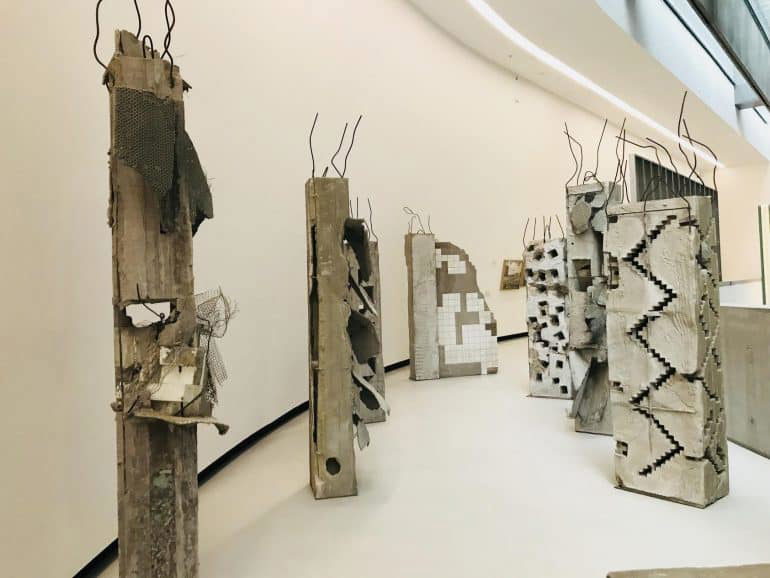A tribute to resilience at Rome’s MAXXI museum
MAXXI’s current exhibition begs the question: how does a city recover after decades of war – 15 years of civil war from 1975 to 1990, followed by another with Israel in 2006, then by the current Syrian crisis on the border?
Home Beirut is essentially a tribute to resilience. Art moves the city forward while the government stagnates. Despite all the losses they’ve endured, the Lebanese seize the day like it’s a cultural mandate, and make the kind of forceful, grab-you-by-the-throat art that suffering tends to generate.
Like its people, the exhibit bursts with humor.
A road sign with multiple arrows, the kind you would find at a cross-road. Each pointer reads ‘Arabs’, as if to say, anywhere you turn, any direction you walk, you will bump into more of us. (There is no arrow for Israelis, notably.)

The unusual case of Syrian rose sellers in Beirut – who are actually secret service agents –presented in a series of photographs of heavily-mustached men proffering bouquets. The caption tells us that nobody ever bought their roses; they were just part of daily life in 2002 when the Syrian army occupied Lebanon.
The comic artist Mazen Kerbaj throws satirical grenades at tragic events. In a timeline about the war with Israel in 2006, which he watched from his window in Beirut, he kvells about the number of airstrikes per day, shows us the mundane ways that life goes on, and strategizes about maximizing his laptop’s battery power during power cuts. In one comic, he proposes a special baseball cap for Arabs with the red and white concentric circles of a bulls-eye on top, so the bombers flying overhead can zero-in on their targets. Elsewhere in the corridors, we find a series of 382 drawings he made during 2012, at least one per day; and a collaboration with musicians, complete with headphones to listen.

The mood bends towards destruction on a ramp that leads to Marwan Rechmaoui’s Pillar: Duchamp’s Bride. Seven cement structures, in various stages of ruin, stand as tall as the viewer. From a distance, they look like sculptures. Up close, they feel like death. Rechmaoui dedicates each ‘building’ to a different source of inspiration, from Duchamp to Tetris, but the overall effect is that of a bombed-out city.
Video installations play a prominent role in the exhibit.
In one corner, the sound of constant shelling invites viewers into a pitch-black room, where Beirut Exploded Views, by Akram Zaatari, plays on a loop. The art films range from the successful tryptic set to the American-Lebanese poet Etal Adnan’s To Be in a Time of War, to the mind-numbingly tedious footage of the Sharjah Wildlife Center. Why a zoo in the United Arab Emirates was included in the exhibit eludes the visitor. Another oversight is the absence of Arabic translations, even when they are essential to understanding the work.
The exhibit is part of the MAXXI series Interactions across the Mediterranean, which looks at the relationship with our neighbors.
There are many similarities to note within the exhibit, as well as in the cities themselves.
In Beirut and Rome, well-coiffed grandfathers drink coffee in outdoor cafés. Fashion trumps comfort, without exception. Parking is an interpretive art. Cigarette smoke clouds the sidewalks. The homes of prominent citizens are guarded by machine gun-wielding soldiers. Two cities that bear tragedy in stride, with a perspective that spans empires.
Till 20 May 2018
MAXXI
Via Guido Reni, 4
Tue – Fri 11am – 7pm, Sat 11am – 10pm, Sun 11am – 7pm
Entry fee: €8 – 12






